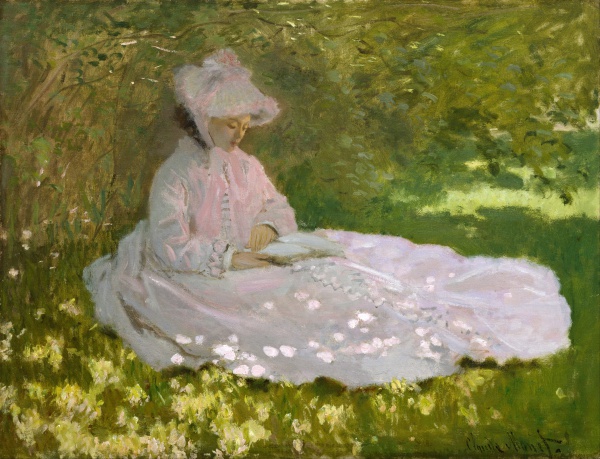Facts About Springtime
Claude Monet's 1872 painting "Springtime" also known as "The Reader" is a beautiful piece that captures a tranquil moment of his first wife, Camille Doncieux, reading beneath a lilac canopy. This charming artwork is now part of the Walters Art Museum's collection. Monet frequently used Camille as a model for his paintings during the 1860s and 1870s. The couple moved to Argenteuil in late 1871, a village that became a center for Impressionist artists. In the spring of 1872, Monet painted several scenes in his garden, including this one.
"Springtime" was exhibited at an Impressionist show in 1876 under the title "Woman Reading." Unfortunately, Monet's second wife, Alice Hoschedé, ordered the destruction of many items related to Camille, leaving Monet's paintings as the primary visual memories of her. In the painting, Camille is the focal point, bathed in dappled sunlight beneath the lilac canopy, creating a peaceful, domestic ambiance.
In 2012, a reproduction of "Springtime" was part of an open-air exhibition called "Off the Wall" in Baltimore, Maryland. This initiative to display art outdoors started in London and was brought to the U.S. by the Detroit Institute of Arts. "Springtime" has been featured in various exhibitions around the world, allowing audiences to appreciate Monet's work alongside other Impressionist masterpieces.

 Mexico
Mexico